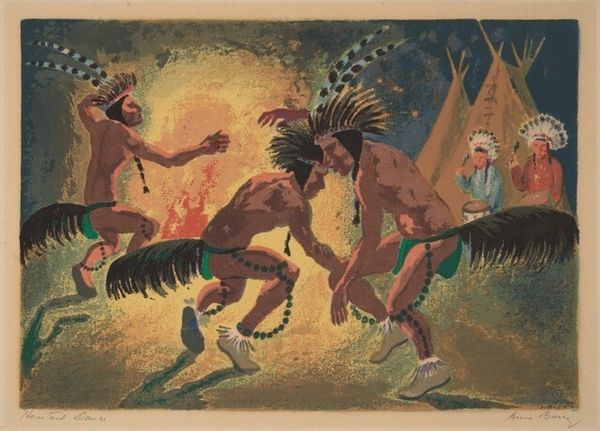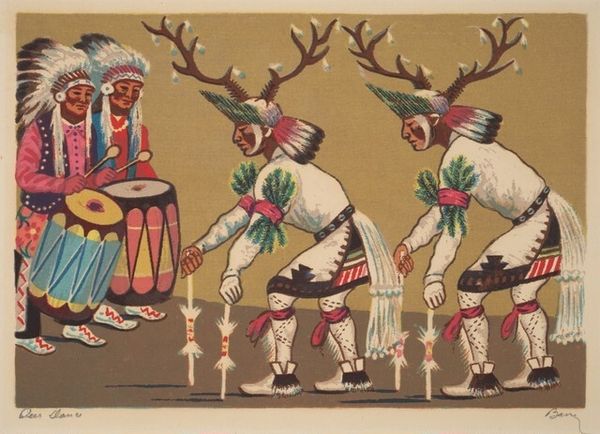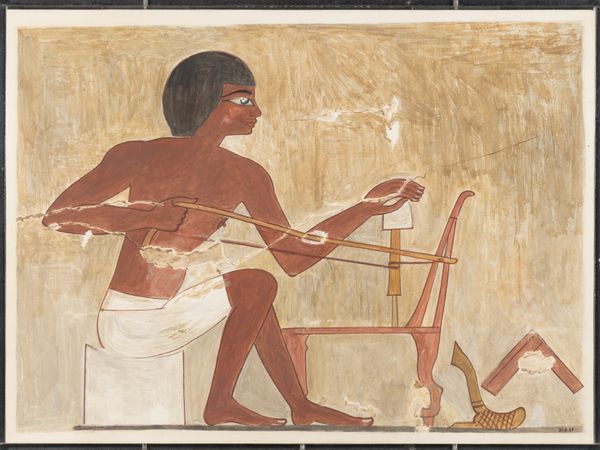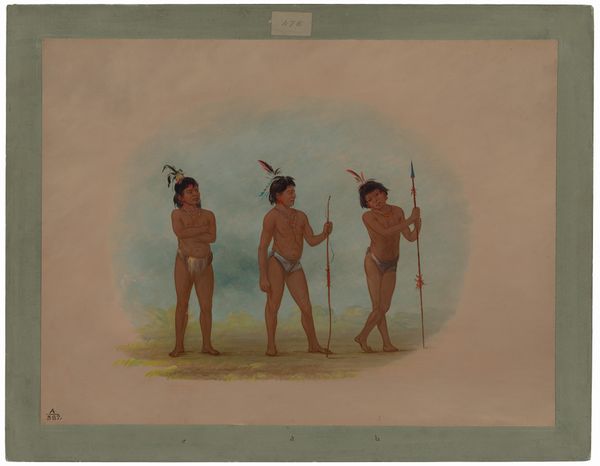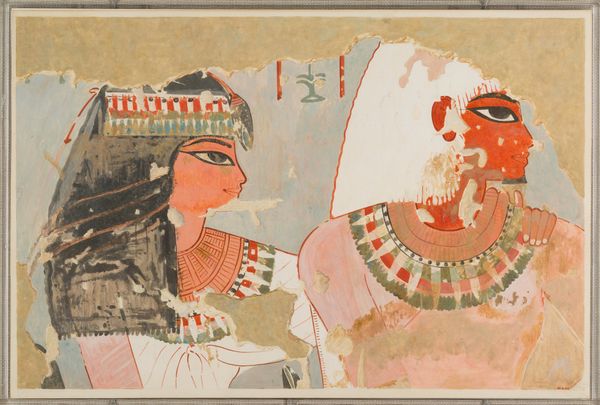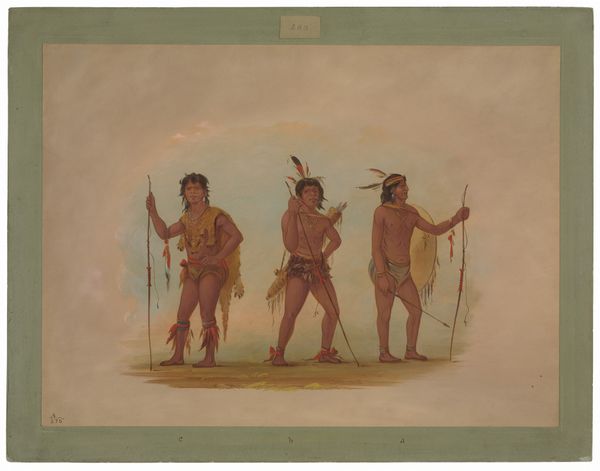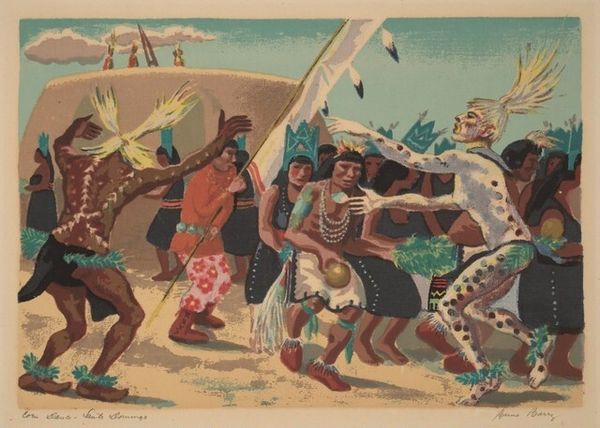
print, woodcut
# print
#
caricature
#
woodcut
Copyright: National Gallery of Art: CC0 1.0
Editor: So, we’re looking at Louie Ewing’s "Corn Dance," a print from somewhere between 1940 and 1950. It's got a kind of flat, almost cartoonish feel to it. It depicts three figures dancing, and what catches my eye is how geometric everything is, even the people. What do you make of it? Curator: It's interesting that you point out the geometric quality. It makes me consider the influence of European Modernism filtering into Native American art production at the time. The figures are abstracted, but they are also presented within what appears to be a traditional ritual context. I think a key question to ask ourselves is: what role was art playing in the representation and perhaps preservation of Native American culture during this period? Editor: That's a great point. Was there a tension between authentically representing the culture and catering to what the dominant culture expected or wanted to see? Curator: Precisely. We see this work emerging during a time of complicated dynamics: the Indian Arts and Crafts Board was promoting Native art, but also shaping its presentation and market. How did Native artists navigate these complex power structures? Were they adapting or resisting? Or both? The image presents the "Corn Dance" not just as a cultural event but also as a curated display. Editor: I see what you mean. It makes me think about how the image itself participates in the story it depicts. It raises questions about authorship, agency, and who ultimately controls the narrative. Curator: Right. By acknowledging this interplay of influences and motivations, we gain a much deeper appreciation of this seemingly straightforward print. It serves as a historical document but also a commentary on its own place in the cultural landscape. Editor: This piece makes me think a lot more critically about what it means to "represent" a culture, and the responsibilities of the artist. Curator: Agreed, it is a fruitful case study of cultural representation and artistic intention within a specific socio-political context.
Comments
No comments
Be the first to comment and join the conversation on the ultimate creative platform.


